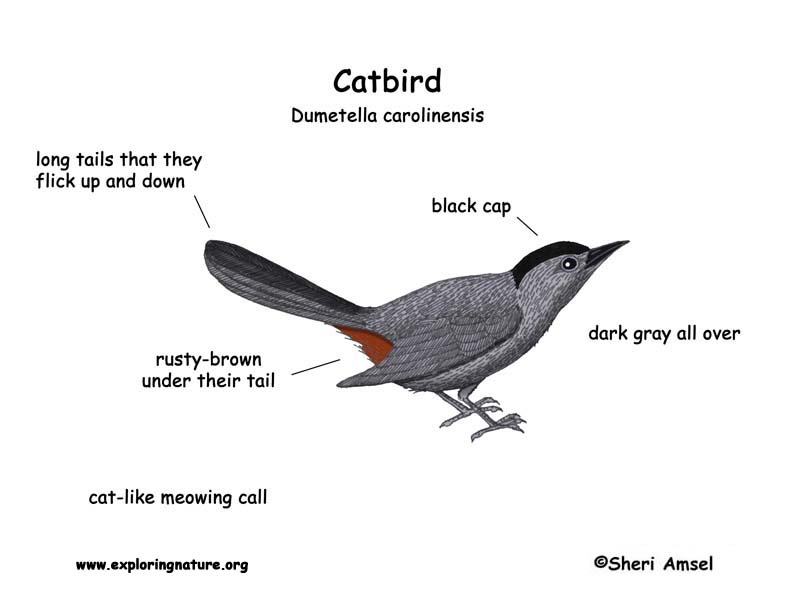

In the summer, they can be found from the east coast of North America to the prairie and Rocky Mountains. They spend the winter along the Gulf of Mexico and the southern east coast.
They are found in thickets in dense cover and bushes.
They are dark gray all over with a black cap and rusty-brown under their tail.
They flick their long tails. They have a cat-like meowing call. They can copy the songs of other birds.
They eat insects, spiders, and millipedes in the spring and more fruit by the fall. They can eat the berries of poison ivy.
Catbirds can build many nests of twigs and grass in thick bushes, but in the end, use only one. Females sit on (incubate) the eggs while the male stands guard.
Kingdom: Animalia
Phylum: Chordata
Subphylum: Vetebrata
Class: Aves
Order: Passeriformes
Suborder: Passeri
Family: Mimidae
Genus: Dumetella
Species: D. carolinensis
When you research information you must cite the reference. Citing for websites is different from citing from books, magazines and periodicals. The style of citing shown here is from the MLA Style Citations (Modern Language Association).
When citing a WEBSITE the general format is as follows.
Author Last Name, First Name(s). "Title: Subtitle of Part of Web Page, if appropriate." Title: Subtitle: Section of Page if appropriate. Sponsoring/Publishing Agency, If Given. Additional significant descriptive information. Date of Electronic Publication or other Date, such as Last Updated. Day Month Year of access < URL >.
Amsel, Sheri. "Catbird" Exploring Nature Educational Resource ©2005-2024. December 13, 2024
< http://exploringnature.org/db/view/Catbird >

